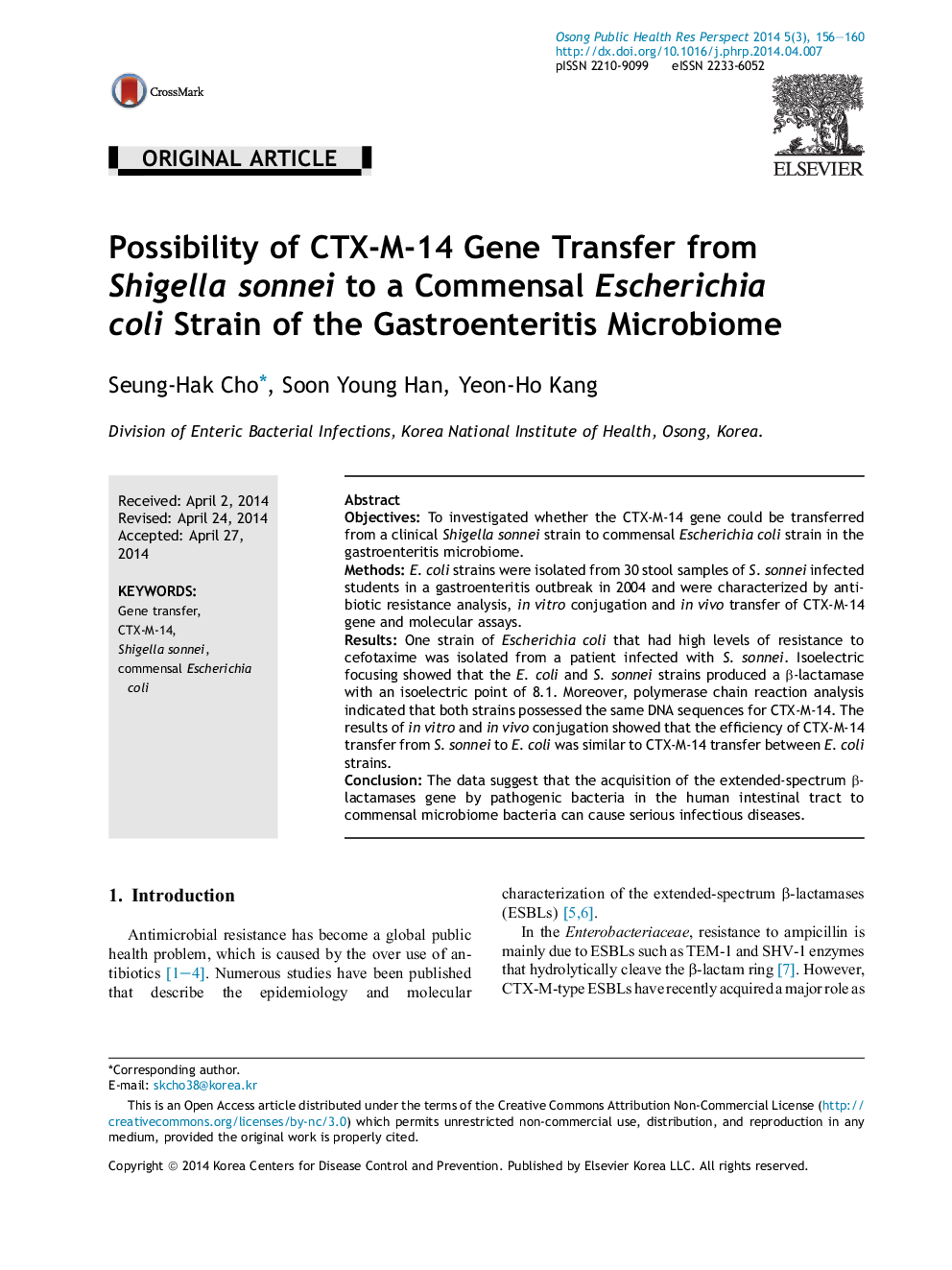| Article ID | Journal | Published Year | Pages | File Type |
|---|---|---|---|---|
| 4202082 | Osong Public Health and Research Perspectives | 2014 | 5 Pages |
ObjectivesTo investigated whether the CTX-M-14 gene could be transferred from a clinical Shigella sonnei strain to commensal Escherichia coli strain in the gastroenteritis microbiome.MethodsE. coli strains were isolated from 30 stool samples of S. sonnei infected students in a gastroenteritis outbreak in 2004 and were characterized by antibiotic resistance analysis, in vitro conjugation and in vivo transfer of CTX-M-14 gene and molecular assays.ResultsOne strain of Escherichia coli that had high levels of resistance to cefotaxime was isolated from a patient infected with S. sonnei. Isoelectric focusing showed that the E. coli and S. sonnei strains produced a β-lactamase with an isoelectric point of 8.1. Moreover, polymerase chain reaction analysis indicated that both strains possessed the same DNA sequences for CTX-M-14. The results of in vitro and in vivo conjugation showed that the efficiency of CTX-M-14 transfer from S. sonnei to E. coli was similar to CTX-M-14 transfer between E. coli strains.ConclusionThe data suggest that the acquisition of the extended-spectrum β-lactamases gene by pathogenic bacteria in the human intestinal tract to commensal microbiome bacteria can cause serious infectious diseases.
